Beauport Hotel guests can explore the city of Gloucester, MA, and Cape Ann…by bike. What a great perk for visitors!
Biking culture linked with tourism in Gloucester and Cape Ann hearkens way back…as in 1878. Scroll down to see historic tourist guides from 1881 and 1885 that catered to cyclists and visitors. The sights and recommendations are the ones we continue to celebrate.
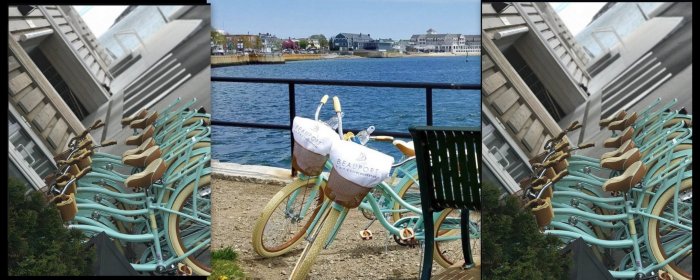
Lookout Hill and Stage Fort Park as seen here from the Beauport Hotel deck is just a close walk or bike ride away.

Enjoy excerpts from an 1885 cyclist tourist guide
In and Around Cape Ann: A Handbook of Gloucester, Mass., and Its Immediate Vicinity. For the Wheelman Tourist and the Summer Visitor by John S. Webber, Jr with eleven illustrations. Gloucester, Mass: Printed at the Cape Ann Advertiser Office, 1885. Library of Congress collection
“…After months of labor–hard labor, too, for one unaccustomed to the work–I am permitted to send forth the present little manual on Gloucester and its immediate vicinity. The material here given is designed for the especial use of the touring wheelman and the summer visitor, and I have endeavored to describe–in a way perhaps peculiar–all the most important sights and places of interest to be found upon this rock-bound territory of Cape Ann…
“The streets about town are generally in condition for bicycle riding, though the surface of most of them is either cut up by thick patches of the coarsest gravel or a layer of loosely lying stones; the rider, however, can pick his way along without any very serious trouble. Main street is paved with square blocks of granite from Porter street to Hancock street, and from Chestnut street to Union Hill. Western avenue, or more frequently spoken of as the “Cut,” is a favorite street for bicycle riding; beyond the bridge take the deserted sidewalk on the left, and enjoy a very pleasant spin upon its easy running surface…
the first suggested itinerary- Bicycle rambles on Eastern Point
“And now let’s take our wheel for a short run along our harbor road to East Gloucester, and note the many points of interest on the way. The start is made at the Gloucester Hotel–the headquarters of all visiting wheelmen in the city–at the corner of Main and Washington streets;
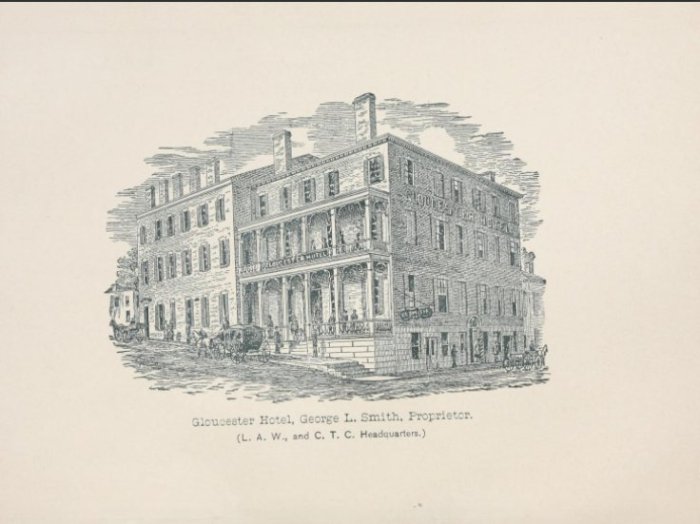
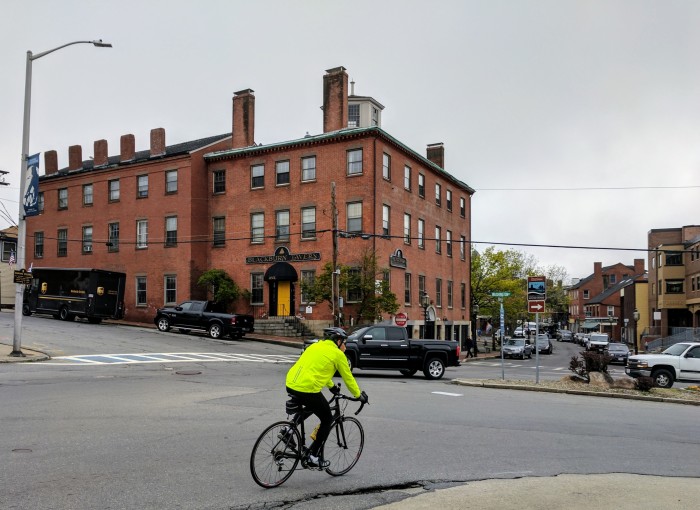
photo: cyclist on the bend passing brick building at Main and Washington now features Tonno Restaurant. Notice the chimneys and same stairs as when it was the Gloucester Hotel. “Special Rates Made to Wheelmen”

“from thence the journey takes us over the rather uneven surface of Main street, going directly toward the east. In a few minutes we pass the Post Office on the left, and soon leave the noisy business portion of the street behind us, then, e’re we are aware of it, we reach and quickly climb the slight eminence known as Union Hill. Once over the hill the road has a downward grade, with generally a very muddy surface, but on through this we propel our machine to the curve in the road at its junction with Eastern avenue. To the right we follow the now well trodden thoroughfare and again pedal quickly up the steep incline before us. Now the machine is well taken in hand, and with a sharp look-out ahead a pleasant little coast over the gently sloping road is cautiously indulged in; down, down we spin, following the main road to the right over the well worn surface, an on, on we glide, past the dwellings of the rich and poor, directly though the business section of the settlement, until in a few minutes we reach the “Square,” so called, at the village center. Passing the pump at this place on our left, we continue the ride over the mud-covered highway, enjoying highly the magnificent stretch of harbor scenery before us. A short distance, and the first dismount is now taken at the foot of a rough incline known as “Patch’s Hill.” At this place are a number of prominent Summer cottages, among them being the Delphine House, Craig Cottage and Brazier Cottage, each affording first-class accommodations, with facilities for bathing, fishing, and boating in close proximity. Once again we bestride the slender wheel and continue on for half a dozen rods or more to the gate-way at the entrance to Niles’ Beach, which marks the terminus of the public way…
Celebrity spotting famous authors
“…Our trip on the bicycle in this direction has finished, and so we sit awhile on the near-at-hand rocky bluff and watch the merry throng of bathers in their sportive antics in the cooling sea, and inwardly wish that we were among them in the refreshing exercise. At our back, as we sit facing the sandy shore, is the little Summer abode of the well known authoress, Elizabeth Stuart Phelps–the cottage in which she has already penned a great number of interesting works, and where she passes the greater portion of the long, warm Summer days.
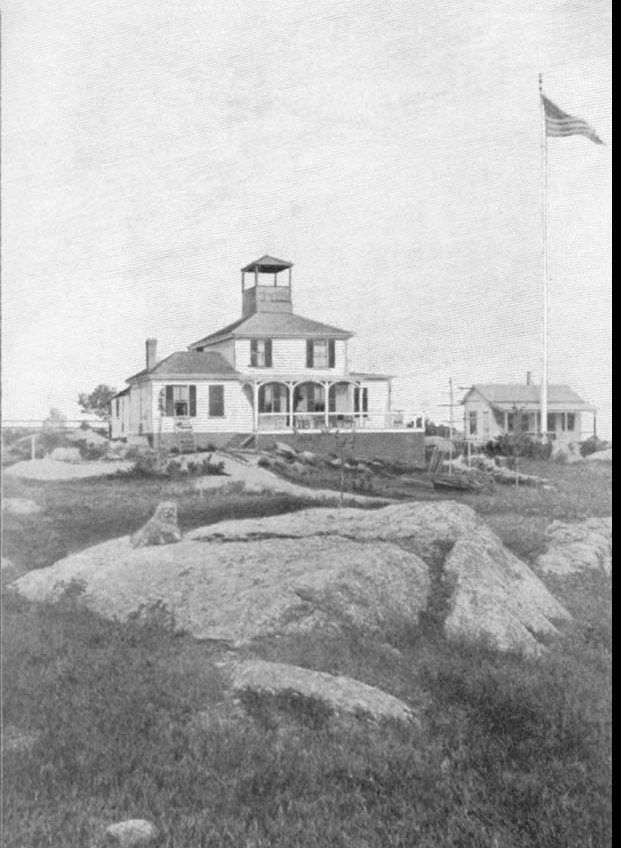
photo caption: Elizabeth Stuart Phelps house
“Directly in front of us, at the further end of the beach, is the old mansion house of the Niles family, and still further on, at the extreme end of the rocky shore, is the tall stone column of Eastern Point Light. “The walk across the beach and over the narrow winding tree bordered path is well worth taking, and makes a pleasant
ramble for the visiting tourist. At the lighthouse the visitor should certainly pass a few moments–the tower is well worth careful inspection; and the fishing, with the long bamboo poles, from the rocks in this vicinity, affords considerable sport, being generally attended with satisfactory results. The old fort on the left, as you proceed along toward the Point, should not be missed–you enjoy a pleasant half hour by just sitting on the ruined parapet and gazing out over the bosom of the grand old sea. These fortifications were erected during the “late unpleasantness” mounted ten mammoth guns, and at one time was a military post of considerable importance, commanding as it did the entrance to our harbor and a wide range of the adjacent bay. I believe, though, no occasion demanded its active services during the entire season of its occupancy. “Niles’ Pond,” a beautiful lake of fresh water covering nearly thirty acres, will also be noticed in this vicinity.

“Returning from the pleasant walk around the Niles property, we again secure our position on the pear-shaped seat, and once more resume our ride, this time following the Point road, over which we recently came, for perhaps a quarter mile, then turning up the long incline leading to Mount Pleasant avenue at the right, near the entrance to which stand the two large ice houses of Mr. Patch, we continue the trip over a fairly good surface and through a particularly interesting section of the town. On we go, flitting by the dwelling houses and green fields at a lively canter, passing the cemetery on our left, and finally reach a more open country. Now we drink eagerly of the deliciously cool sea breeze that comes over the farm lands from the deep blue waters around us, and for the first time we notice, with a keen sense of enjoyment, the beautiful panoramic picture spread out before our eyes. We are loath to leave the vicinity, so impressed are we with the magnificent stretch of land and ocean scenery; and while seriously contemplating a dismount to more fully enjoy the beauties of the place, a turn in the road now brings us into the avenue leading to the famous seashore resort known as the “Bass Rock” settlement.

*photo caption- Bass Rocks House. F.H. Nunns, Proprietor (1895). Bass Rock House expanded and at its height could accommodate 250 guests. The hotel was destroyed by fire in 1896.
“The Bass Rock House looms up before us almost directly after entering the thorough fare, and the pleasing little coast we now take brings us directly to the hotel door. This hotel at Bass Rocks has recently been appointed by consul Burnham of Gloucester a league headquarters, and wheelmen will be cordially entertained at any time during the Summer. The house is one of the finest on the coast, being noted particularly for the excellence of its cuisine. Special rates to L.A.W. tourists.
You catch a good idea of this charmingly situated seaside settlement in a ride along the road leading on past the hotel grounds toward the rocky coast below. The land hereabouts was originally owned in “cow rights” by different parties, and was long known by the name of “Harbor Pasture.” About the year 1846 Mr. George H. Rogers, then a prominent merchant of Gloucester, began the purchase of these “cow rights” and soon acquired possession of the entire territory comprising them. Mr. Rogers, it is believed, foresaw the advantages this beautiful tract of land offered as a future seashore resort, and at once began the improvement of the property by laying out avenues and roadways, cutting up the pasture into suitable building lots and otherwise greatly enhancing the value of the premises, expending vast sums of money in the work. Mr. Rogers died, however, before he realized any pecuniary benefit from the outlay, and the property was sold to Mr. Henry Souther, of South Boston, Mass., who in turn sold it to the Gloucester Land Company. This Company built a small hotel, sold several of the building lots, and then the property passed again into the hands of Mr. Souther, who is the present owner. This gentleman immediately began the work of bringing the property into market, and spent considerable money in further improving it; a large addition was built to the small hotel, cottages were erected, new driveways constructed and the old ones rebuilt, and soon the section became noted as one of the most attractive on the coast.
“Among the many private residences here is that of Attorney General Edgar J. Sherman, of Lawrence, whose house stands directly upon the rocky cliff overhanging Bass Rock itself, to which the building is securely bolted. The scene from the spacious veranda of this dwelling is a grand one–to the left is noticed the long white sand strip of Little Good Harbor Beach; on our right the noble old ocean stretches out in its grandeur to the sky; Salt Island and Thacher’s lie directly in front of us, the two tall lighthouses on the latter rising like grim sentinels above the vastly deep; while seventy odd feet beneath us the “sad sea waves” dash with terrific force against the huge jagged rocks, sending a thick blanket of snow-white foam afar out over the restless surface of the little cove.

photo: Edgar J. Sherman (1834-1914 ) bolted down his “birdcage” home on Sherman’s Point (perched far left) near Little Good Harbor Beach in 1878. Sherman was a Civil War Veteran, Attorney General of Massachusetts and Associate Justice of Ma Superior Court.
“To see Bass Rocks in its glory one must visit the place during a storm; then the waters roll up in mountainous waves, and breaking against the rocky shore send thousands of tons of spray completely over the dwelling on the cliff above.
Another hotel, the Pebbly Beach House, stood at the extreme end of the shore road, and was quite a favorite establishment with the Summer tourist. This building was burned to the ground during the Spring of last year (1884)**.
**This travel guide predates the Moorland and Thorwald. George Stacy started the Moorland in 1896, nearby the former Pebbly Beach hotel. The Moorland expanded to hold 350 guests at its peak performance, and remained in operation until a 1958 fire. The Thorwald was built in 1899 and succumbed to fire in 1965.
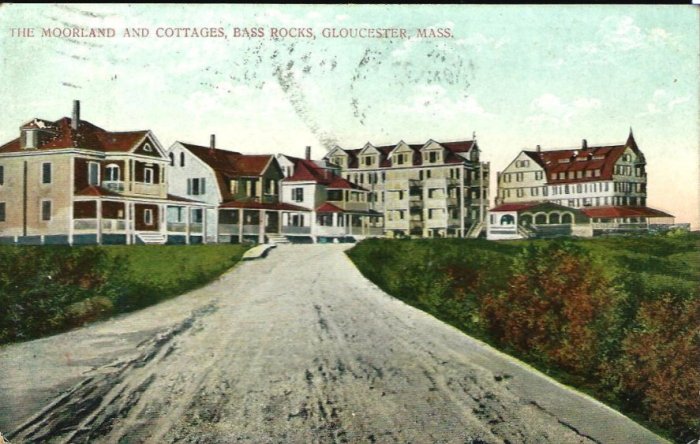
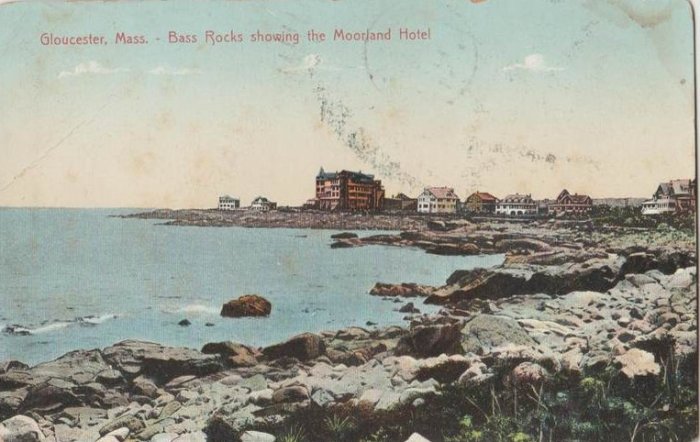
continuing the bike tour
“In returning from this section of the town we begin the journey at the Bass Rock Hotel, upon the road leading off to the right angle with the one over which we recently wheeled, and soon reach the descending slope of the curving way. Wheelmen should keep a sharp outlook from this point, for the meeting with a coming team or striking one of the numberless pieces of loose granite on the rough surface of the road might cause a serious accident to the rider and wheel. Once around the curve, our feet are taken from the pedals and down the gravelly descent we rapidly coast, enjoying the beautiful scenery on the right. The turn in the road ahead is cautiously taken and we are soon at the bottom and safely wheeling over the narrow pathway by the side of Bass Rock avenue. Then the familiar East Main Street, at the “head of the harbor” is taken, and over this thoroughfare we rapidly wheel, and soon arrive at the Gloucester Hotel.”
“This trip to Eastern Point is one affording much enjoyment, and if his time will allow, the visiting bicyclist should not fail to take it in…”
History of early cyclists in Gloucester and the North Shore
“WHEELMAN VISITORS IN PAST YEARS: From the time of the first appearance of the rubber-tired wheel in America until the present year (1885), the trip along the north shore to Gloucester, Massachusetts, has been considered one of the most enjoyable wheel-runs in New England. The first visit of the bicycle to Gloucester was in the early part of the year 1878. The writer well remembers the curious crowd of lookers-on that surrounded the pioneer wheelman as the dismount was made on the main thoroughfare of the town; even now the many questions and exclamations of the wonder-struck populace can be recalled to mind, as they gazed with mouth agape upon the slender two-wheeled team…”
How long did it take to bike here from Harvard?
“The rider came from Cambridge, Mass., and made the trip in three and a quarter hours; the machine was a 54-inch English make affair, and was a heavy, clumsy-looking wheel in comparison with the beautiful models of today. The wheelman made the return journey by train.”
“…Messrs. Paul Butler and Willis Farrington, both of Lowell, Mass., (who with four others founded the Boston Bicycle Club in February this year) were among the early visitors to this city, on wheels; their favorite run being to Gloucester, thence to Ipswich and Newburyport, and along the wooded roads of Essex county…”
“…The writer timed Still. Whittaker here, this month, on his one hundred mile run. Whittaker made remarkably fast time on this run, and broke the previous record. He left Harvard Square in Cambridge at 7A.M. and rode to Wellesley and return (22 miles), thence to Salem and return (62 miles), thence to Gloucester (99 miles), reaching the city at 3.50P.M. Some one suggested that he had hardly covered the one hundred miles, and to fully satisfy the party, and more probably himself, Whittaker rode out to the schoolhouse on the Manchester road (1-3/4 miles) and returned to the Gloucester Hotel at exactly 4 P.M. giving him a full one hundred miles, with one and a half to spare…”
Table of Contents
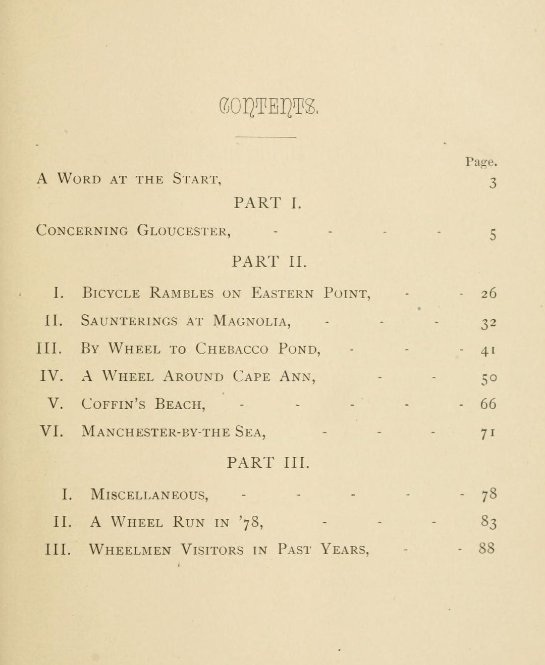
LIST OF ILLUSTRATIONS
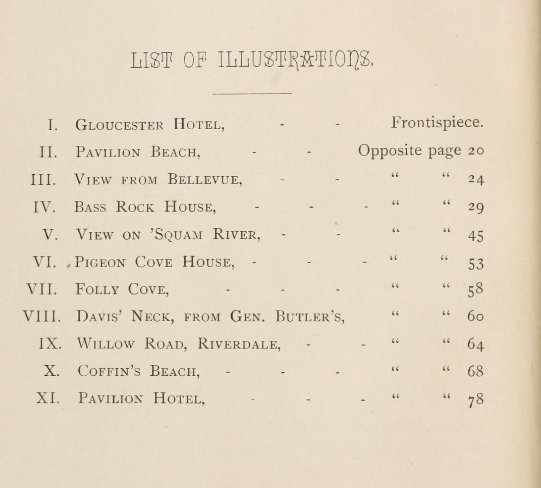
Cape Ann Bike Loop is the same then & now
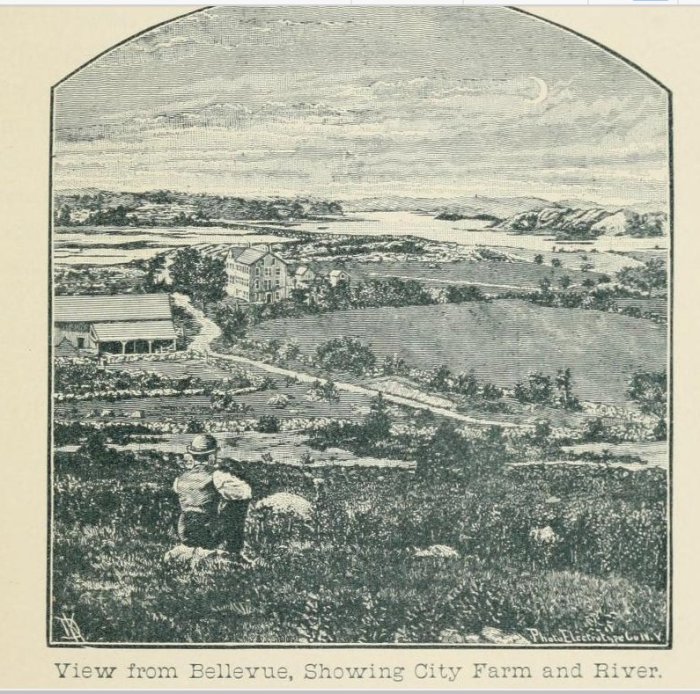
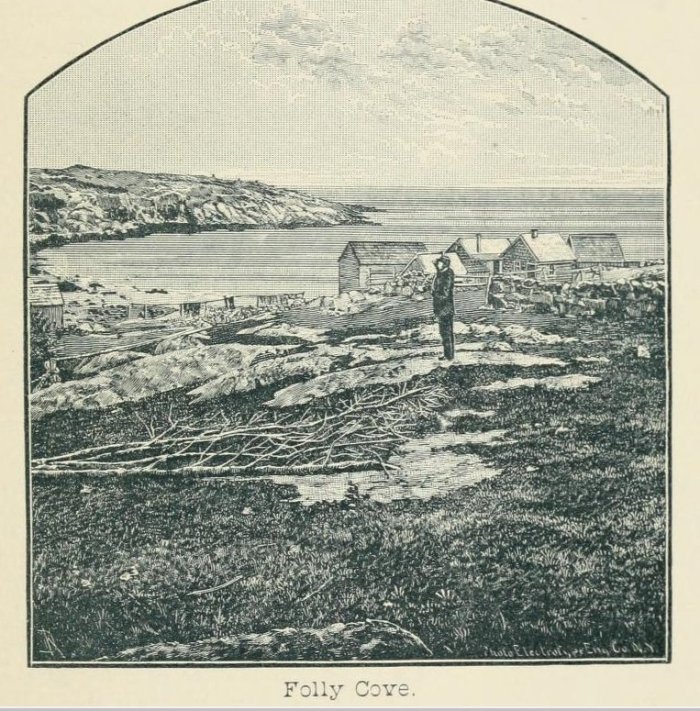
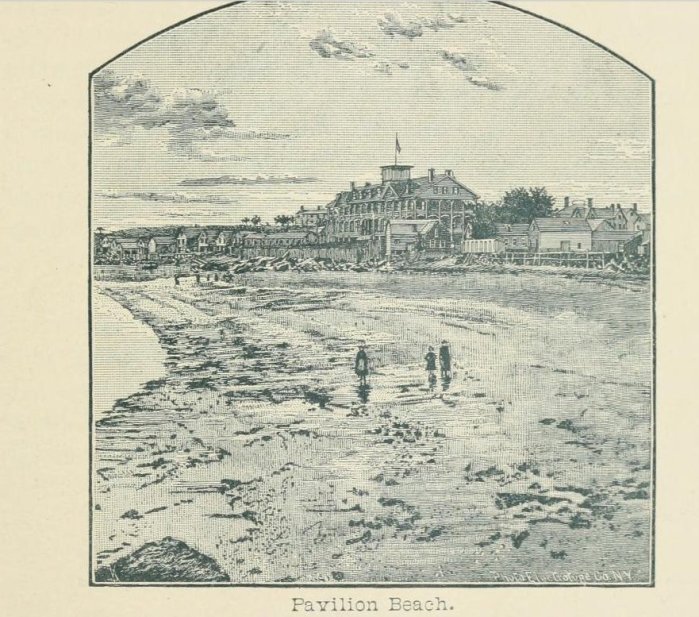
photo caption: Pavilion Hotel was built in 1849 by Sidney Mason to accommodate 150 guests. It burned down in 1914 and was rebuilt as the Surfside Hotel. It’s now the Tavern.
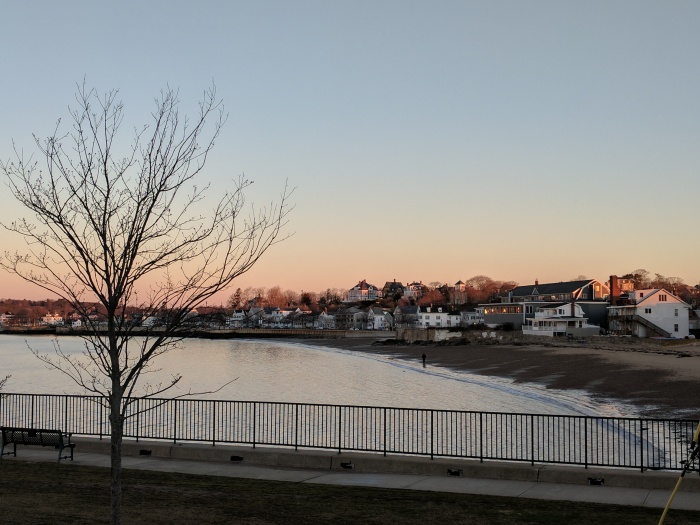
Photo: Pavilion Beach in front of Beauport Hotel looking to Tavern (former Surfside)
photo: Beauport Hotel
Who knew? Elliott Skating Rink on “the Cut”, Western Avenue
“In the way of amusement Gloucester is sadly in want. The only really attractive section of the city in the Summer evenings is that bordering the Pavilion Beach and along the locality known as the “Cut” on Western Avenue. In this vicinity there is one amusement temple that calls for especial mention here. The Elliott Skating Rink is situated nearly opposite the Pavilion Hotel; it has a skating surface 40 x 116 feet, and is the favorite resort of a large portion of our youthful populace. The proprietor is Mr. Smith, of the L.A.W. hotel, and he has proven a most energetic one, with the able assistance of his manager, Mr. Fred. A Harbison. A specialty at this place is a series of social dancing parties, on Saturday evenings–it is just the place to pass a pleasant two hours for our wheelman visitors.”
“During the evening the Elliott Rink was visited, and here the wheelmen tendered a most cordial reception to Dan Canary, the trick rider, who at that time was fulfilling an engagement with the Girard & Vokes Combination. A “Kangaroo” wheel was introduced to the Gloucester people by this part, and its rider, Mr. Willilam E. Webber, gave an excellent exhibition of skilful riding at the skating rink…”
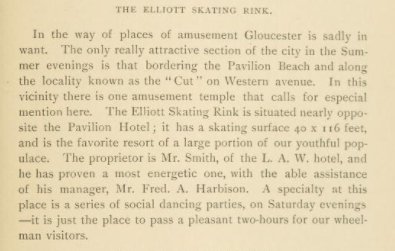
if you didn’t want to bike to Gloucester, the train and steamboat fares 1885
East Gloucester ferry left from Parkhurst’s wharf (Duncan Street) every 15 minutes, one way 4 cents. Another pull was the yacht club established in 1880 boasting 60 members and 25 yachts.

Advertisements
bike garb marketing

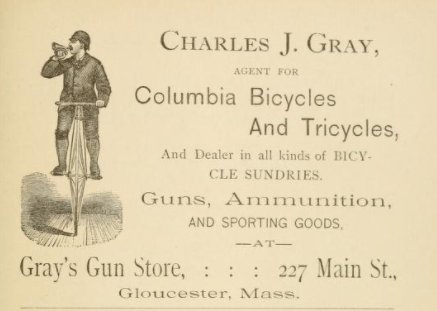
Another page, this one from the 1905 summer hotel guide by Gloucester Board of Trade. Publicity Committee (University of Massachusetts Amherst Archives collection)
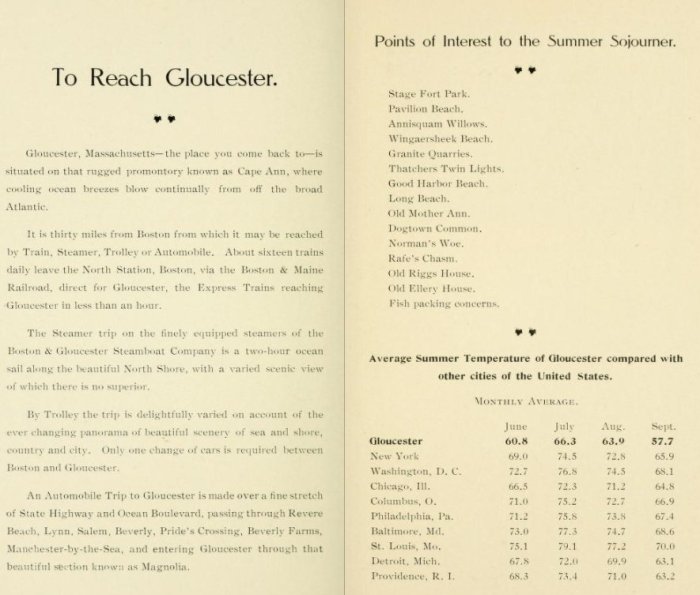
A page from the 1905 guide shows the Delphine Hotel mentioned in the 1885 guide still in business
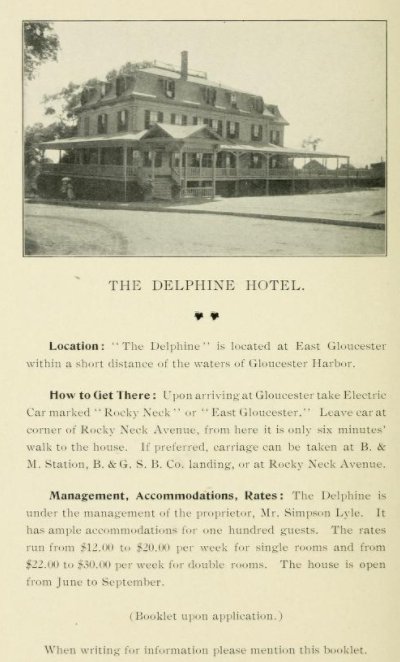
1905 listed lodgings include: Downtown locations (The Surfside Hotel); East Gloucester (Delphine Hotel–(page above)–,the Fairview, the Pilgrim House, Merrill Hall and Cottages, Moorland Hotel, The Harbor View, The Hawthorne Inn and Cottages, the Beachcroft, The Mailman House, The Rockaway and Cottages, Hotel Thorwald); Annisquam (the Brynmere, the Overlook Hotel); Magnolia (The Oceanside Hotel, Aborn Hotel and Cottages, the Grand View, the Hesperus); Long Beach (The Edgecliffe Hotel); Wingaersheek Beach (Wingaersheek Inn). “Many smaller boarding houses which are perfectly reliable” in Freshwater Cove, Magnolia, Middle Street, Western Avenue (Mrs. Clark at Western Avenue and Middle Street), and Annisquam also paid for a listing.
1881 tourist map, North Shore Illustrated Guide
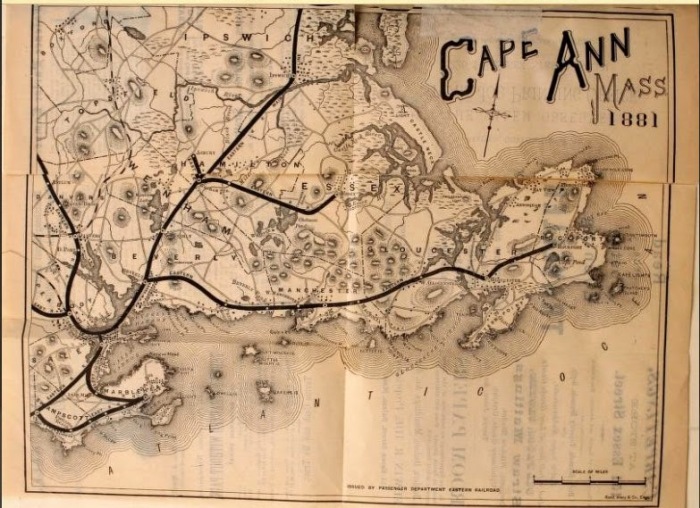
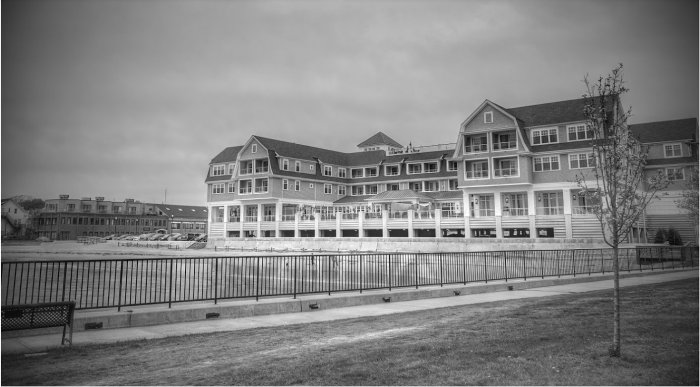

Great post
LikeLike
Of course, Magnolia is itinerary #2 🙂 I’ll post that another day
LikeLike
Love it!
LikeLike
the custom bikes for the guests at Beauport Hotel is a great idea, right? Thanks for looking.
LikeLike
This is GREAT! We’ll rides some of these places today!
LikeLike
Excellent. Beautiful day for it, Richard. thanks for the comment and happy riding!
LikeLike
Send us a picture
LikeLike
Love this….
LikeLike
Glad to hear it! Thank you Brenda. Do you bike?
LikeLike
Fascinating post C, your research is showing. Sweet reflection of sky on glass table. Easy to see why that house was named the Birdcage. I’ve seen one other image with the porches intact. No wonder the BlackBurn Tavern/Gloucester Hotel steps are so worn. And a porch. Beauport renters only can ride the bikes – who in town will enterprise & start renting to the public? I’ll take a ride.
LikeLike